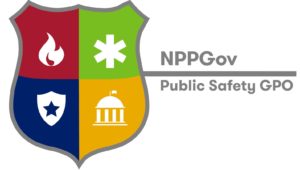The Economy and Fire Apparatus: Challenges, Uncertainty, and the Power of Cooperative Agreements
May 30, 2023
By Bill DeMars, executive director of NPPGov
 The economy has had a significant impact on the fire apparatus industry, and thus local fire departments that need this apparatus. In this article, Bill DeMars, executive director of NPPGov, explains the reasons for higher costs and uncertainty, as well as how cooperative agreements can help departments save time and keep costs down.
The economy has had a significant impact on the fire apparatus industry, and thus local fire departments that need this apparatus. In this article, Bill DeMars, executive director of NPPGov, explains the reasons for higher costs and uncertainty, as well as how cooperative agreements can help departments save time and keep costs down.
The current economy is having a ripple effect on all aspects of our lives, and the fire apparatus industry is not immune. In the past, manufacturers were able to project cost and availability of components and vehicle chassis up to 24 months in advance. However, the current economic climate has made it difficult to even project 6 months in advance. The volatile economy, along with record inflation rates, has led to increased transportation costs as well as fluctuating prices for raw materials and components. As a result, manufacturers are faced with the challenge of predicting future costs and to plan production accordingly.
“To no surprise, the pandemic has been unfavorable to this area of the business, but it is our mission to secure supply to meet the demands of our production and aftermarket partners,” said Kristina Spang, vice president, aftermarket product & support at Pierce Manufacturing. “In this relentless pursuit for supply, we are constantly battling capacity, delivery, and of course cost.”
Three of the biggest challenges facing the fire apparatus industry are in the areas of human capital, supply chain, and carrier reliability. These challenges are having a negative impact on the future cost of fire apparatus.
There is currently a shortage of qualified workers in the fire apparatus industry, a problem exacerbated by the fact that many of the workers currently in this field are nearing retirement age. There is a need for more young people to enter the field and receive the training necessary to replace those who are retiring. This shortage of workers has forced manufacturers to reassess manufacturing needs and consider options such as robotics, increased automation, and potentially a more focused product offering.
 The supply chain for fire apparatus components also represents a major challenge. The cost of transportation has increased significantly in recent years, making it more difficult for manufacturers to get components to where they need to go. Additionally, many components are only available from a limited number of suppliers, which can lead to situations where manufacturers are forced to pay higher prices. The two most impacted impactful areas are vehicle chassis and electronic components. Since there are a limited number of manufacturers for chassis, it has become a challenge to get the chassis as well as long term production planning for future orders.
The supply chain for fire apparatus components also represents a major challenge. The cost of transportation has increased significantly in recent years, making it more difficult for manufacturers to get components to where they need to go. Additionally, many components are only available from a limited number of suppliers, which can lead to situations where manufacturers are forced to pay higher prices. The two most impacted impactful areas are vehicle chassis and electronic components. Since there are a limited number of manufacturers for chassis, it has become a challenge to get the chassis as well as long term production planning for future orders.
Carrier reliability is a third factor affecting the fire apparatus industry. Carrier reliability refers to the ability of companies to transport the chassis to the manufacturers for assembly, as well as the transport and delivery of completed fire apparatus on time and in good condition. Unfortunately, many carriers have been unable to meet minimum acceptable standards in recent years, which has led to delays and order cancellations.
To make things even more difficult, the Request for Proposal (RFP) formal purchasing process for apparatus can often be a lengthy and complicated one, full of red tape and delays. It can add an average of 240 days to the purchasing process, which ultimately extends the delivery time even further. This can often lead to changes in prices and other terms, which can cause delays and frustration for both the municipality and the fire apparatus manufacturer. However, it is important to remember that the RFP process is designed to ensure that the municipality gets the best possible value for their limited public funds. In the end, it is important to be patient and allow the process to run its course.
 Cooperative purchasing, also known as piggy backing, utilizes existing cooperative agreements between two or more government entities for the procurement of goods and services in an efficient and effective manner. Cooperative contracts are typically established by lead public agencies who select vendors through a competitive solicitation process. Other entities can then use this established agreement to purchase their goods and services without having to spend the time and energy to repeat the competitive solicitation process themselves.
Cooperative purchasing, also known as piggy backing, utilizes existing cooperative agreements between two or more government entities for the procurement of goods and services in an efficient and effective manner. Cooperative contracts are typically established by lead public agencies who select vendors through a competitive solicitation process. Other entities can then use this established agreement to purchase their goods and services without having to spend the time and energy to repeat the competitive solicitation process themselves.
“We’re in a time of great economic pressure,” said Mike Duyck, CEO at Hughes Fire Equipment. “Fire departments are under pressure to serve rapidly growing communities. Making sure they have the infrastructure in place at the right time, given the supply chain lead time challenges, has become even more difficult. Knowing the right steps to take and leveraging the tools available like cooperative purchasing can make future growth forecasts align with capital purchase and apparatus replacement schedules.”
Cooperative contracts provide a streamlined procurement process for municipalities to purchase goods and services while still getting the best value for their taxpayers. They also typically shorten the time it takes to place an order, as well as provide more favorable terms and conditions with the manufacturer based on a consortium’s total member purchase volume flowing through the contract. With the uncertainty of today’s economy and inflation, these agreements bring stability and support to users in their purchasing process. For these reasons, cooperative purchasing is an attractive option for municipalities looking to save time and money on their next purchase.
Fire departments looking to find cooperative agreements for fire apparatus as well as other fire service equipment and services can use a cooperative procurement organization such as NPPGov. Through NPPGov’s Public Safety GPO, members have access to a broad range of publicly solicited contracts along with individual discount programs and negotiated contracts for below threshold purchases. NVFC members can access NPPGov for free at https://nppgov.com/association/nvfc/.



